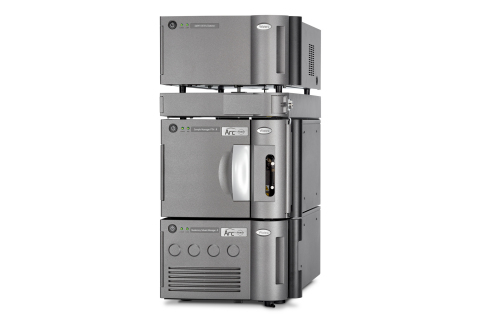
MILFORD, Mass.– Waters Corporation (NYSE:WAT) today introduced the Waters™ Arc™ Premier System, the first liquid chromatography system optimized for chromatographic separations on 2.5 – 3.5 micron columns to also feature Waters’ novel MaxPeak™ High Performance Surface (HPS) technology. The new system complements Waters’ best-selling MaxPeak Premier Columns to virtually eliminate the surface interactions that occur between sample analytes and instrument and column hardware, saving laboratories time wasted on costly passivation and providing greater confidence in separations results.
Analytical scientists working in method development and quality control laboratories can typically waste hours and days re-running or troubleshooting analytical methods that fail to reproduce an expected test result, such as missing low concentrations of a target analyte known to be in the sample or that fail to detect an impurity. The Waters Arc Premier System and Columns are designed to help increase speed, consistency and confidence in analytical results for scientists working to develop, transfer and run chromatographic assays that are central to business and laboratory operations.
“With liquid chromatography results, there is no room for error. Laboratories cannot afford to overlook or under-report an impurity in a drug formulation for example, or miss product release timelines because of assay variations,” said Udit Batra, President and CEO, Waters Corporation. “Laboratories both big and small have long suffered the frustrations of analyte/surface interactions, which degrade sensitivity, reproducibility, and of separations methods that can require several days for passivation. The combination of the Arc Premier System and Columns sets a new standard for pharmaceutical analysis, giving scientists the confidence they need while reducing the cost and time to market.”
The Arc Premier System delivers reproducibility and repeatability for scientists developing methods for stability testing, impurity profiling and product release data in compliance with regulatory requirements. The combined solution provides reproducibility without sacrificing performance along with system ruggedness for delivering consistently accurate chromatographic results in test after test.
“Mitigation of deleterious analyte interactions with chromatographic columns and systems has always plagued separations scientists striving for perfect peak shapes and recoveries,” says Jonathan Shackman, Associate Scientific Director, Bristol Meyers Squibb. “Material modifications that maintain all the best properties of stainless steel while reducing or even eliminating these secondary binding events will be transformative. Removal of internal passivation procedures and skipping mobile phase additives to address chelation is exciting and very promising!”

